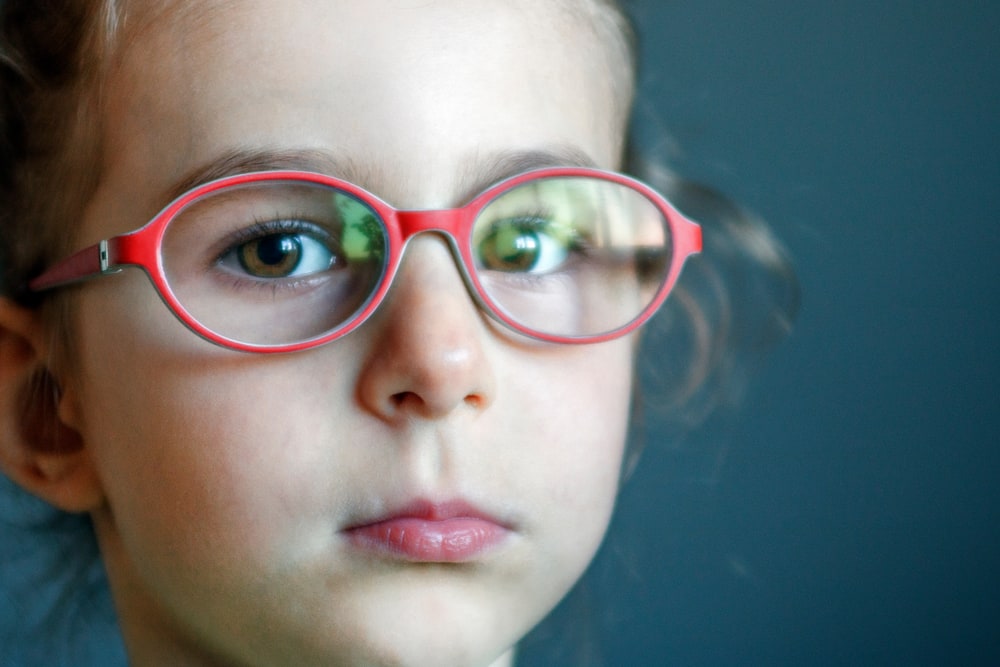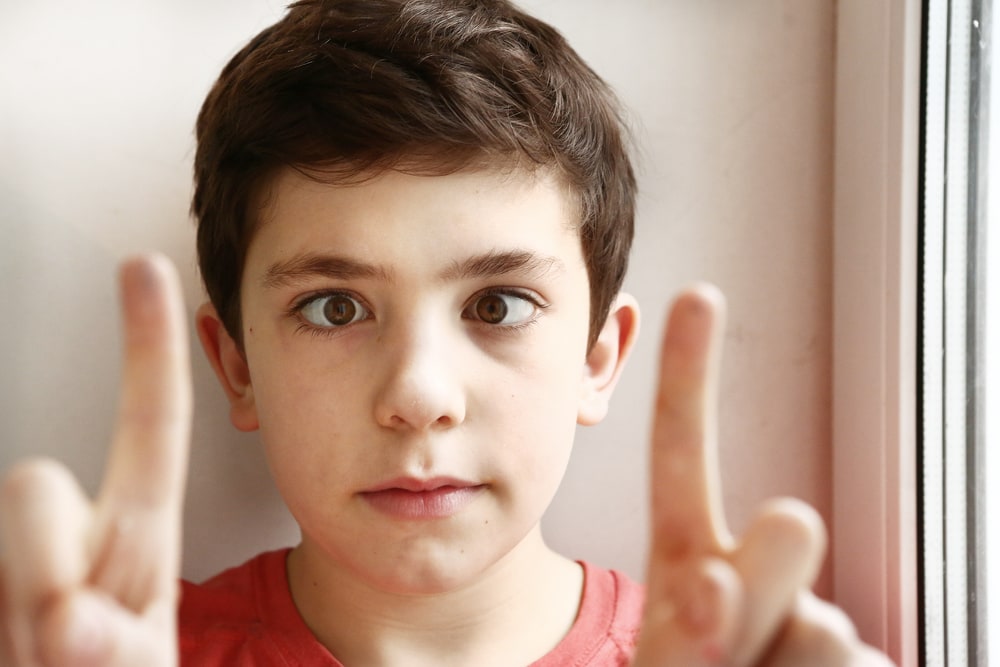Vision Therapy for Athletes
Athletes rely on hand-eye coordination, quick reactions, peripheral vision, depth perception, and the ability to track objects and people in focus.
Throughout a game, athletes are continually taking in and making decisions based visual information. Tennis players keep a constant focus on the ball, its speed and direction, and understand where to position themselves to return the ball. Football quarterbacks have to make decisions based on visual information, locate, fixate, track and accurately pass to their receiver, all while knowing where the other players are located on the field to avoid a sack. Baseball players have to react to, and make contact with, the baseball. Literally every athlete benefits from a properly functioning visual system. Proper visual skills enable athletes to know when and where to hit, kick, or catch, and when to refrain from doing so. Without properly functioning vision, athletes may have a delayed or early reaction, or exert excessive or insufficient force. They may lose their awareness of the field or court – hitting or kicking balls out of bounds.

Vision leads the body by answering:
- Where is the ball?
- Where is other player(s)
- Where am I
- Where is field/court/net/goal
Vision determines timing by resulting in an action:
- When to hit/kick/catch
- Where to hit/kick/throw
- When to refrain from hit/kick/catch or throw (inhibition)
Sports vision training is designed to improve the athlete’s visual skills for their sport. The training continues until the athlete reaches automaticity in visual performance skills, with a high degree of peripheral awareness and visual processing speed.
Skills Needed for Optimal Performance:
- Visual Acuity
- Static, dynamic, detailed vision zone
- Refractive Status
- Contrast sensitivity
- Ocular Health
- Color Vision
- Accommodation
- Accuracy, facility, speed of change, sustaining ability
- Eye Movements (Visual Acuity)
- Static, dynamic, detailed vision zone
- Refractive Status
- Contrast sensitivity
- Ocular Health
- Color Vision
- Accommodation
- Accuracy, facility, speed of change, sustaining ability
- Eye Movements (eye tracking)
- Fixation, pursuits, saccades
- Binocularity (eye teaming, stereopsis)
- Object localization, depth perception
- Static, dynamic, near and far, speed and sensitivity
- Eye Tracking
- Fixation, pursuits, saccades
- Binocularity (eye teaming, stereopsis)
- Object localization, depth perception
- Static, dynamic, near and far, speed and sensitivity
- Object localization, depth perception
- Speed of recognition
- Visual memory/pattern recognition
- Peripheral awareness
- Speed and span of processing
- Visual reaction time
- Visualization
- Filtering of visual noise/distraction
- Sensory integration
- Auditory, proprioceptive
The goal of optometric vision performance training is to develop an athlete’s ability to process the maximum amount of visual information taken in at a glance, as rapidly and accurately as possible, under conditions of physical and mental stress
Vision Therapy for Concussions/TBI (Traumatic Brain Injury)
Traumatic brain injuries often result in the disruption of cognitive function. Because so much of the brain is devoted to the visual process, any injury to the brain can negatively affect visual function.
What Vision-Related Issues Does a Concussion Cause?
- Eye Movements The ability to fixate on objects or people, to follow them during movement, and shift between objects at different distances.
- Eye Teaming: Pointing the eyes on the same object with both eyes simultaneously. This visual skill is critical to depth perception.
- Eye Focusing: The ability to rapidly and accurately change focus, as well as sustain focus, maintaining clarity
- Visual Decision Making
- Visual Processing Speed

Without these critical visual skills, patients often suffer from a number of vision-related conditions:
- Inability to track objects
- Inability to focus on objects
- Impaired binocular vision
- Increased sensitivity to light
- General fatigue
- Headaches when reading
- Difficulty with decision making
- Trouble in school
- Delayed reaction time
As a result, children who suffer from concussions may experience the following symptoms:
- Memory loss/ decreased retention skills
- Loss of balance
- Handwriting issues
Treating the functional vision issues that result from a concussion or traumatic brain injury is critical to restoring overall function. A functional vision exam along with optometric vision therapy can help diagnose and treat these issues to improve vision skills and restore normal function.
Vision Therapy for Children and Students
80-90% of classroom learning comes through the visual system. Children must have excellent visual skills in order to thrive in a classroom learning environment. Vision therapy can aid children without the appropriate visual skills to learn in the classroom, read better, spend less time on homework, and mentally visualize what is taken in through the eyes to aid in visual memory.
Many children who are struggling or underperforming in school without a diagnosed learning disability often have visual issues. In fact, in some studies, up to 25% of all children have a vision problem that is significant enough to affect school performance. With deficient visual skills, a child’s ability to learn and comprehend knowledge will be compromised.
These are common indicators that children are having visual issues:
- Not performing up to potential
- Avoids reading and/or homework
- Enjoys being read to, but cannot or chooses not to read independently
- Takes longer to complete assignments than understanding of a topic or intelligence would suggest

Vision problems tend to become apparent while children are learning to read. These tendencies may indicate that children have visual issues:
- Skipping or rereading words or lines of text
- Poor reading comprehension skills
- Letter reversals
- Shorter attention span while reading
- Develops headaches while reading
Vision therapy can help children develop these essential visual skills, and improve overall school performance. With the proper diagnosis and remediation of functional vision issues, children should experience the following benefits:
- Easier time learning and retaining information
- Read faster, and eventually, at higher levels than they were previously able to
- Complete homework faster
- Be more comfortable and confident in their visual capabilities
- Improve coordination, athletic abilities, and memory
- Process and analyze information at a faster rate
Vision Therapy for Learning Disabilities
According to the American Foundation of Visual Awareness, the typical vision screening only identifies 5% of vision problems in children. Children who are either struggling or underperforming in school are often diagnosed with learning disabilities. While these diagnoses may be accurate, statistics show that functional visual issues may actually be the issue, or compound the issue. In fact, 6 out of 10 children with learning disabilities have undiagnosed vision problems. In another study, 85% of learning disabled children were found to have visual issues.
Providing the proper optometric vision therapy for these children can reduce the visual symptoms of these learning issues, helping the child better adapt to their disability.

Reading Dysfunction
Children with average or above average intelligence with normal sensory development who cannot learn to read have a reading dysfunction. Parents and teachers may assign the blame to a learning disability, but reading dysfunction could also be the cause.
Children who exhibit the following symptoms often have a reading dysfunction:
- Not working to potential in school
- Having trouble with reading
- Hates school
Addressing this problem early on is critical for a child’s ability to learn throughout his or her education. After third grade, children stop learning to read. Instead, they begin reading to learn. If a reading problem persists, it will impede learning.
Optometric vision therapy can help.
Dyslexia
Dyslexia is a dysfunction in which there is a deficiency in an individual’s ability to interpret the symbols of written language due to minimal or differential brain dysfunction. This condition mostly causes problems with reading, writing and spelling. The symptoms that are shared by people with dyslexia and people with vision problems include poor eye teaming, poor eye tracking and visual-perception difficulty. A functional vision exam is needed to establish that the problem is visual, or has a visual component.
Optometric vision therapy is NOT a cure for dyslexia. However, if there is a visual component, visual efficiency and processing can be improved, helping the patient function better in an educational setting.
Autism
Autism is a neurobiological disorder in which individuals have a difficult time processing and responding to information from their senses. This often leads to issues with communication and social interaction.
However, visual problems are also very common. The following autism symptoms may actually be a result of a functional visual issue:
- Lack of eye contact
- Side viewing
- Difficult attending visually
- Visual information processing/visual perception
Vision therapy will help patients to improve these visual skills.
Gold Coast Vision Performance can help your child to become more comfortable in the classroom, and set the foundation for an outstanding learning ability.
ADD/ADHD
Attention deficit disorder (ADD) and attention deficit hyperactivity disorder (ADHD) are conditions in which children cannot concentrate on particular tasks. However, these conditions have high correlation with convergence insufficiency, a functional visual issue in which children cannot focus on a particular object or person.
15 of the 18 symptoms used to diagnose ADD and ADHD are also symptoms of vision related learning problems. In fact, children with any vision problem can exhibit the same signs as ADD/ADHD.
In many cases, receiving vision therapy will improve a child’s ability to focus, and can lessen or eliminate several or all ADD/ADHD symptoms.
What are the similarities between ADD/ADHD and vision issues?
The following chart compares the symptoms of ADD/ADHD with those of vision problems.
| Symptoms | ADHD | Visual Problems |
|---|---|---|
| Inattention | ||
| Often fails to give close attention to details or makes careless mistakes | X | X |
| Often has difficulty sustaining attention in tasks or play activities | X | X |
| Often does not listen when spoken to directly | X | X |
| Often does not follow through on instructions or fails to finish work | X | X |
| Often has difficulty organizing tasks and activities | X | X |
| Often loses things | X | X |
| Often distracted by extraneous stimuli | X | X |
| Often forgetful in daily activities | X | X |
| Often avoids, dislikes or is reluctant to engage in tasks requiring sustained mental effort | X | X |
| Hyperactivity and Impulsivity | ||
| Often fidgets with hands or feet or squirms in seat | X | X |
| Often has difficulty remaining seated when required to do so | X | X |
| Often runs or climbs excessively | X | |
| Often has difficulty playing quietly | X | |
| Often “on the go” | X | |
| Often talks excessively | X | X |
| Often blurts out answers to questions before they have been completed | X | X |
| Often has difficulty awaiting turn | X | X |
| Often interrupts or intrudes on others | X | X |
Vision Therapy for Amblyopia (Lazy Eye)
Amblyopia, commonly referred to as lazy eye, is a common visual issue that requires dedicated attention to correct. This condition, in which one eye has stronger visual skills than the other, results in a lack of binocularity – causing the brain to rely on the stronger eye for visual input. Consequently, the brain disregards images from the other eye, making it less sighted than the dominant eye. Keep in mind that there is nothing wrong with the lazy eye!
Receiving vision therapy is the only way to train the brain to use images from both eyes.
Amblyopia is frequently first noticed in a school environment, where students may have difficulty throwing and catching objects, or bump into obstacles. These issues with depth perception are caused by the lack of equal input from each eye. Without the proper treatment, this serious condition can have far-reaching effects.

There are three main types of amblyopia that affect children:
- Refractive Amblyopia: Differing prescriptions in the eyes
- Strabismic Amblyopia: Constant turning in the eye
- Deprivation Amblyopia: Differing strengths caused by a physical condition, such as a cataract
Vision therapy for amblyopia is designed to improve the functioning of the weaker eye and making the neurology speak with that of the other eye so they work together and do not rival one another. This process does not include total occlusion patching, which is an old-fashioned method that has not been supported in the literature.
Vision Therapy for Strabismus (Crossed Eyes)
Strabismus is the medical term for eyes that are not aligned – a relatively common issue in which the individual’s eyes do not point to the same place in space at the same time. This condition occurs because of an issue with eye teaming, a critical visual skill, which prevents the brain from forming one image between the two eyes. With this condition, the eyes automatically turn in a different direction to avoid confusion or double vision. Ultimately the brain will learn to suppress the turned eye – ignoring the input all together. Without binocularity, the brain will not be able to properly process the information in the surrounding area.
Optometric vision therapy can help people with strabismus improve their eye teaming abilities by improving the way the brain is processing and correlating the visual input from the two eyes. If the neurology is not taught to coordinate, the eyes will turn again, which is why often more than one surgery is needed to correct the problem (the most common way strabismus is treated in the U.S. is by surgery). If surgery is recommended, as is sometimes necessary, the most forward thinking surgeons will recommend (as we do) vision therapy before and after the surgery to train the neurology to work together, thereby decreasing the chance for repeated surgical procedures.

During the treatment, we take four factors into account:
- Direction of Eye Turn: Inward, outward, up, down, or rotating
- Frequency: Constant or intermittent
- Eyes: How many are affected
- Severity: To what extent will the eyes turn
Patients with untreated crossed eyes could result in one of the following conditions:
- Double Vision: Both eyes perceive each image, but twice, and these overlapping images disorient the patient.
- Suppression: The patient ignores images from one eye.
- Anomalous Correspondence: The patient attempts to align the images in each eye, with some margin of inaccuracy/error.
Optometric vision therapy can train patients to eliminate functional visual issues, resulting in lasting, less-invasive, results.
Vision Therapy for Eye Strain
In the age of information, technology plays an ever evolving role in our lives. People are spending hours at a time in front of the computer at school or at work, and then continue to use computers and other technology at home. Additionally, people of all ages tend to read printed material up close, with little or no break for movement or distance viewing. Looking up close requires the system to work (accommodation) to keep things in focus, which can result in more energy expenditure, causing eye strain. Optometric vision therapy, along with the appropriate spectacle correction, while also taking a preventative approach, is the ideal way to mitigate these symptoms of eye strain.
In addition to the potential strain from looking up close for a prolonged period, computers produce short wavelength blue light. Prolonged exposure to this wavelength has been shown to have a negative impact on the eyes. This condition, also called computer vision syndrome or digital eye strain. Sitting within close proximity to a computer or other device that emits this light is potentially harmful.

These are some of the devices that can create functional vision problems, like eye strain:
- Computer (desktop and laptop)
- Tablet (iPads)
- E-reader
- Cell phone
People with the following symptoms are usually suffering from eye strain:
- Strained eyes
- Headaches while looking at the device/ after looking at a device
- Eyes that feel dry during/after looking at a device
- Pain in the neck and/or shoulder
- Blurred vision
Eye Strain from Reading Books Up Close
Despite the lack of blue light, reading up close can also be quite taxing on the eyes. When the words on the page are small, the eyes must make an extra effort in order to read them at a normal pace. Reading for extended periods of time with poor habits can cause eye strain, for both children and adults.
Reading conditions can play a large part in the potential development of eye strain, and include:
- Reading in a dimly lit room
- Reading for long periods of time without breaks
- Lack of blinking
- Exposure to glare or excessive light

The symptoms of eye strain from reading are fairly obvious, and should be self-diagnosable. However, many people tend to dismiss the symptoms of eye strain as slight discomfort. Without the proper treatment, though, they will persist and potentially worsen. If you begin to experience any of the following symptoms while reading, you should strongly consider a functional vision exam.
- Difficulty focusing or concentrating on reading
- Double vision
- Increased sensitivity to light
- Blurred vision
- Dry eyes
- Watery eyes
- Feelings of general discomfort (sore, tired, burning or itchy eyes)
- Headaches
While reversing these poor habits is essential to decreasing eye strain, optometric vision therapy can also help. A suitable treatment for people of all ages, engaging in these exercises can retrain your eyes to function properly.
Teachers are uniquely positioned to notice eye strain caused by either digital screens or books. Addressing these issues early on can help the child enjoy a more productive and comfortable learning environment, and prevent future issues.
Discomfort while reading can amplify over time, especially without treatment. Correcting this functional vision disorder is critical. With a comprehensive approach, Gold Coast Vision Performance can assess the vision disorder at hand, and provide the necessary treatment.
If you find yourself or your child suffering from any of the above conditions, contact us. Gold Coast Vision Performance is skilled at detecting functional visual issues, preparing a unique treatment, and guiding the patient through the treatment process. With the overall cognitive visual process in mind, this treatment will help patients excel in the classroom, sports, and other endeavors.






